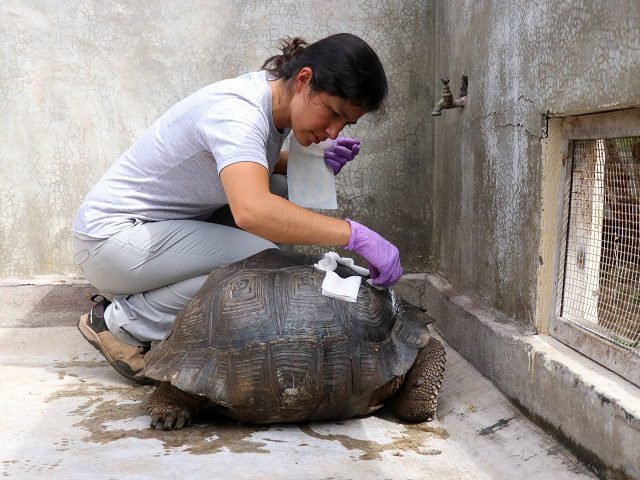The driver of a tour bus on the Galapagos Islands has been fined over $11,000 for having accidentally run over a tortoise in danger of extinction, damaging the creature’s shell.
The incident occurred this past November 21, when the driver of the bus hit a giant tortoise belonging to an endangered species. After an administrative trial carried out by the directorate of the Galapagos National Park (DPNG), the driver was sentenced November 29 to a fine of $11,347, which corresponds to 16 times the man’s monthly salary payment.
As stated in the Galapagos National Park Facebook account, the incident caused “the partial destruction of the shell of a female turtle of the species Chelonoidis porteri,” or the Santa Cruz Giant Tortoise, one of 11 surviving species of Galapagos tortoises. The driver accepted responsibility for the accident, while stressing that he had not seen the tortoise.
In assigning the sentence, the judge cited the Convention for International Commerce of Threatened Species of Flora and Fauna (CITES), according to which the tortoise is registered as a member of a protected species in danger of extinction.
In recent years the authorities of the Galapagos Islands, a Pacific archipelago that forms a province of the nation of Ecuador, have tightened laws to protect the region’s fragile ecosystem where numerous indigenous species of animals and plants live. The management of the Natural Park recently opened an investigation against a citizen filmed on the pier of San Cristóbal while allegedly harassing a sea lion.
Despite the harm to her shell, the turtle’s life is reportedly not in danger and photos of the healing tortoise have been published on social media (see above).
Last March, conservationists released 155 giant tortoises on the Galapagos island of Santa Fe to help replace a similar species that died out 150 years ago.
The young tortoises, of the breed Chelonoidis hoodensis (Espanola Giant Tortoise), were raised at the Fausto Llerena breeding center as part of a program to repopulate the island.
The animals are “between 10 and 12 years old and should start to reproduce in the next five to seven years,” said Washington Tapia, who is in charge of Galapagos Conservancy’s giant turtle project.
The Galapagos islands, recognized as a UNESCO World Heritage Site, are known for their unique flora and fauna, which helped inspire Charles Darwin to write his 1859 study on evolution, The Origin of Species.

COMMENTS
Please let us know if you're having issues with commenting.